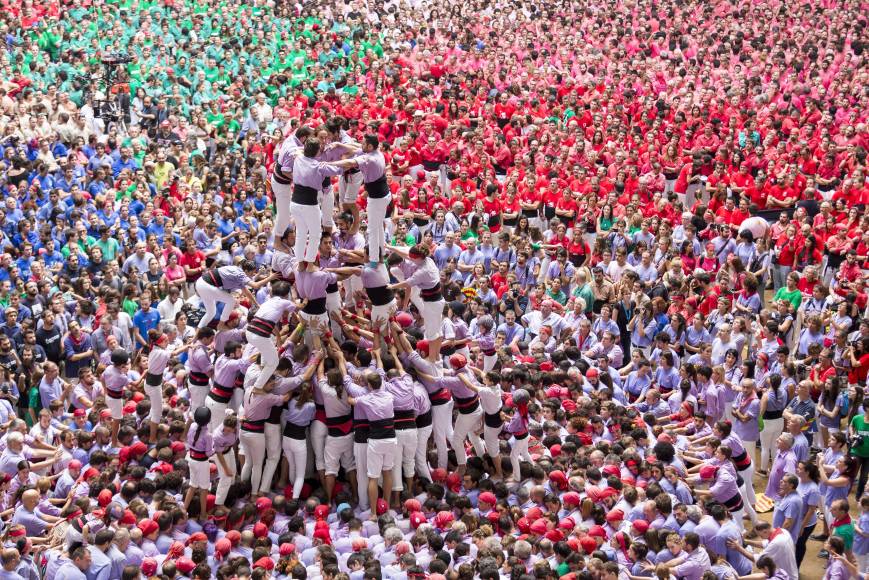Where can I see Castellers in Catalonia?
The castellers are one of the most emblematic and popular traditions in Catalonia. They are human towers six to ten stories high, known as castells. They represent the values of collaboration, effort, community, and self-improvement. This activity, declared Intangible Cultural Heritage of Humanity by UNESCO in 2010, is very popular in different towns and cities in Catalonia, especially during major festivals. From Naturaki, we will introduce you to the origin of the castellers, the main events in Catalonia, and their importance within Catalan culture.
What is the origin of the Castellers?
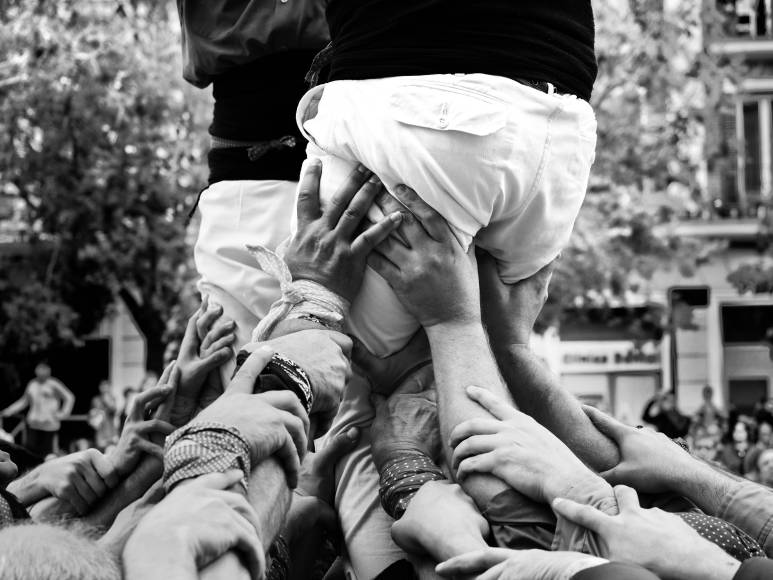
The origin of the castellers is to be found in the muixeranga, an 18th-century Valencian pagan dance that ended with the raising of a small human tower. This tradition arrived in Catalonia, especially in the Camp de Tarragona. Over time, the final figure of the Valencian dance gained prominence, shifting the focus to making it taller and more complex, sidelining the dance. The first documented casteller groups appeared in Valls, considered one of the cradles of this tradition, from where it spread to other areas of Catalonia. Over more than two centuries, the castells have evolved significantly: initially, it was an activity exclusively for men, and it was not until 1970, with the Minyons de Terrassa, that women joined the practice. In the early 20th century, the castellers faced critical moments to the point of nearly disappearing. However, today, they are experiencing one of their best moments and have become an essential symbol of Catalan identity.
What is the structure of a Castell?
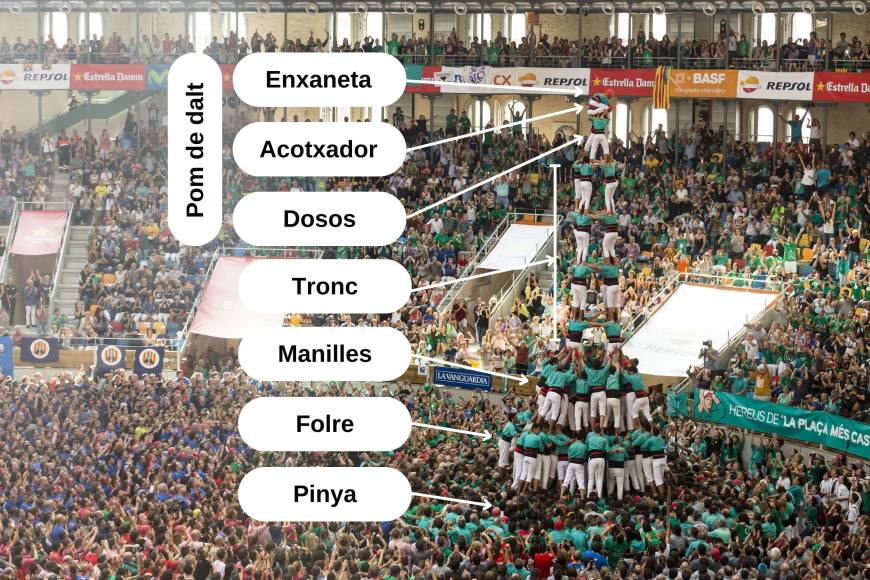
The structure of a castell is divided into 3 distinct parts: la pinya, el tronc and el pom de dalt. At the base is the pinya (pineapple), made up of volunteers and members of the colla, which provides stability and safety to the whole. In some castells de gama extra (castells of great difficulty superior to 3 of 9 with folre), we can also find above the pinya, the forle and the manilles. Next comes the tronc (trunk), formed by the floors that make up the central part of the castell. Above the tronc, we find the pom de dalt, formed by the dosos, which mark the beginning of the pom de dalt,the acotxadorand, finlly the enxaneta, who is in charge of finishing the castell by raising an arm once they reach the summit. Castellers, moreover, cannot be understood without the music of the gralles and drums.
Main Casteller Events in Catalonia 2026
Valls
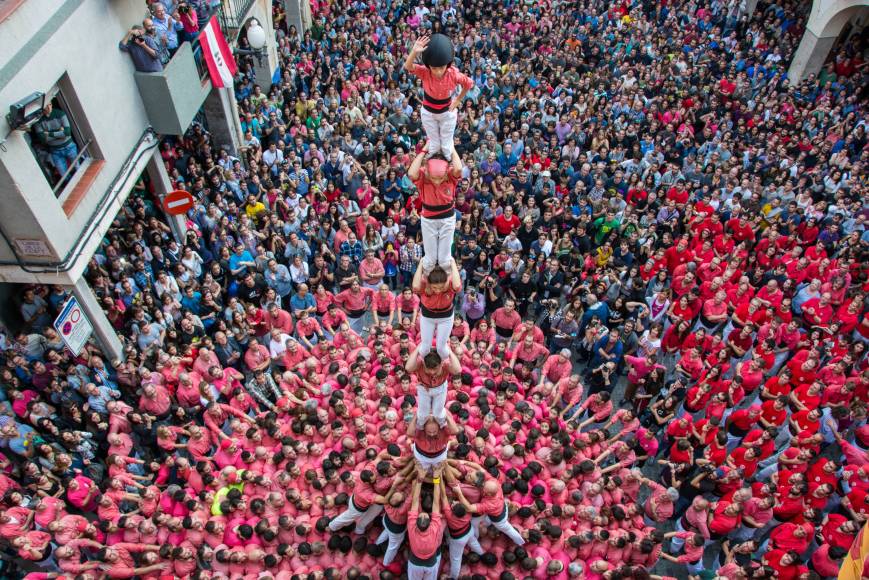
Valls, in the Alt Camp region, is considered as the capital of popular traditions and as mentioned, the birthplace of the castellers. Here, some of the oldest and most prestigious groups, such as Colla Vella dels Xiquets de Valls and Colla Joves Xiquets de Valls, can be found. If you visit the town, you can see castells during various festivals, especially during the Major Festival of Saint John in June and Firagost in August.
Tarragona
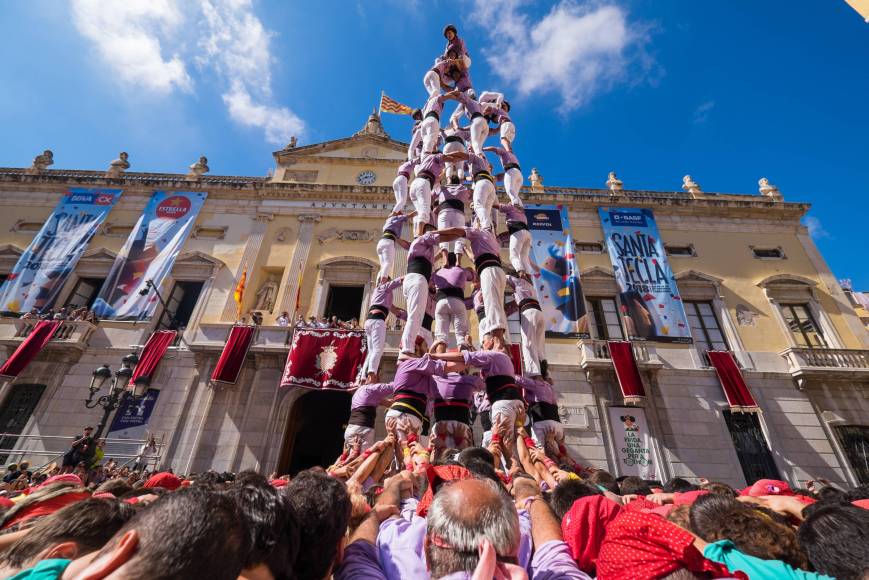
Tarragona is undoubtedly a must-visit if you want to see good castells. You can go during the day of Santa Tecla, where you will see the four local groups and even two top-notch foreign colles. Additionally, every two years, the city of Tarragona hosts the famous Castells Contest, considered the main casteller event. It is held at the Tarraco Arena Plaça and brings together the best casteller groups from Catalonia. This event is ideal for those who want to see castells of great complexity and spectacularity.
Vilafranca del Penedès
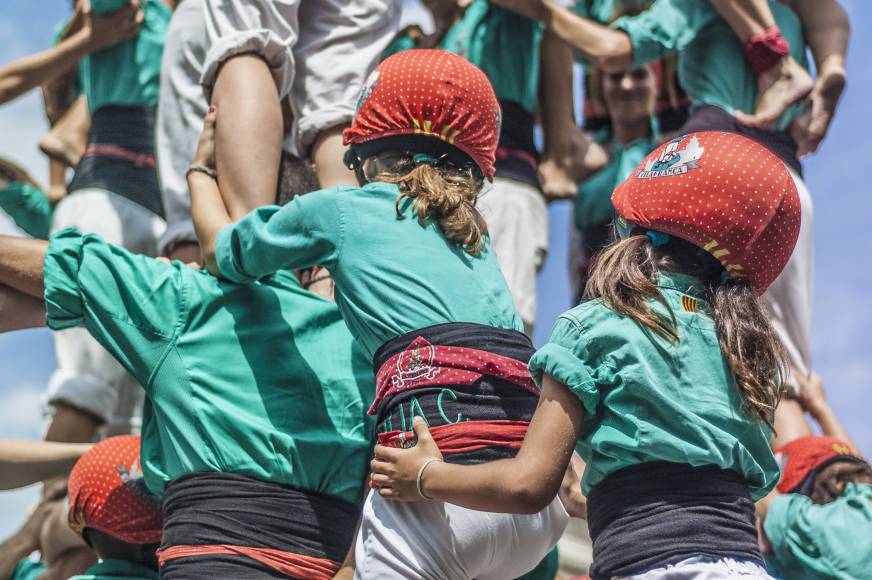
Vilafranca, in the Penedès region, is another crucial spot of the casteller world. During the day of Sant Feliu (on August the 30th), some of the best casteller performances of the year can be seen. It is a key event in the casteller calendar, featuring prestigious groups such as the Castellers de Vilafranca.
Barcelona
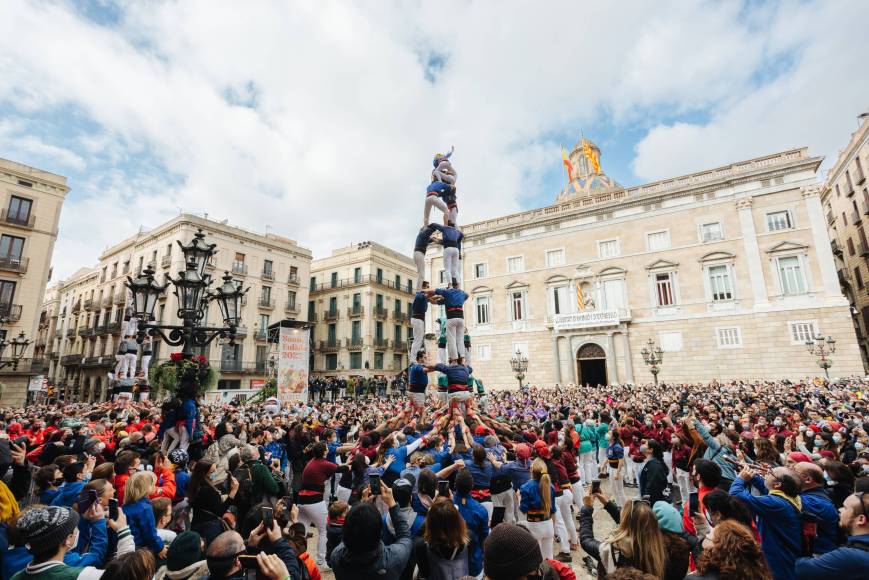
In the city of Barcelona, castells can also be seen throughout the year, especially at events like La Mercè in September, where local groups, such as the Castellers de Barcelona, perform in front of thousands of people. Other popular events in the city include performances in Sants and Gràcia, coinciding with neighborhood festivals.
Terrassa
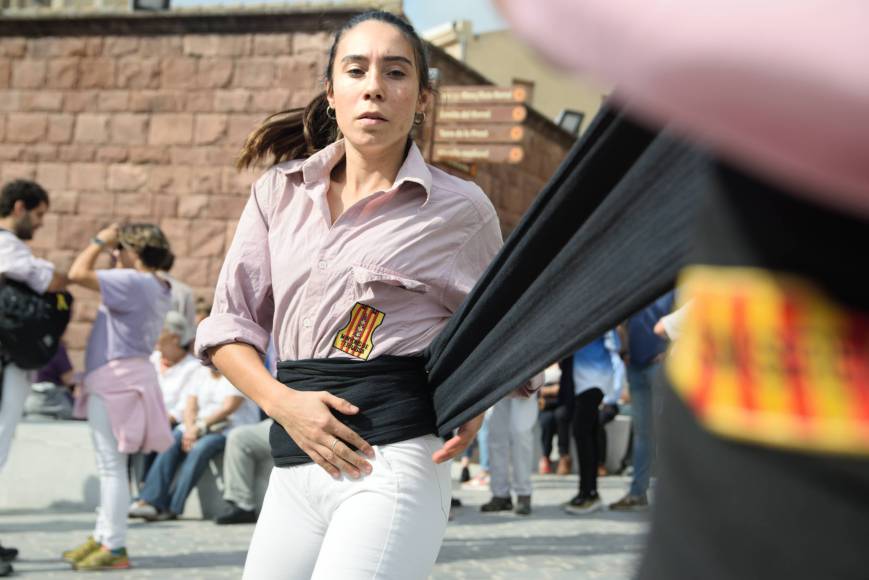
Terrassa has a historic group, the Minyons de Terrassa, which organizes several performances during its Major Festival. The two local groups, the Minyons and the Castellers de Terrassa, perform, along with a third guest group. Additionally, the third or fourth Sunday in November marks the Minyons Day, the last performance of the season. It is usually attended, of course, well wrapped up.
Girona
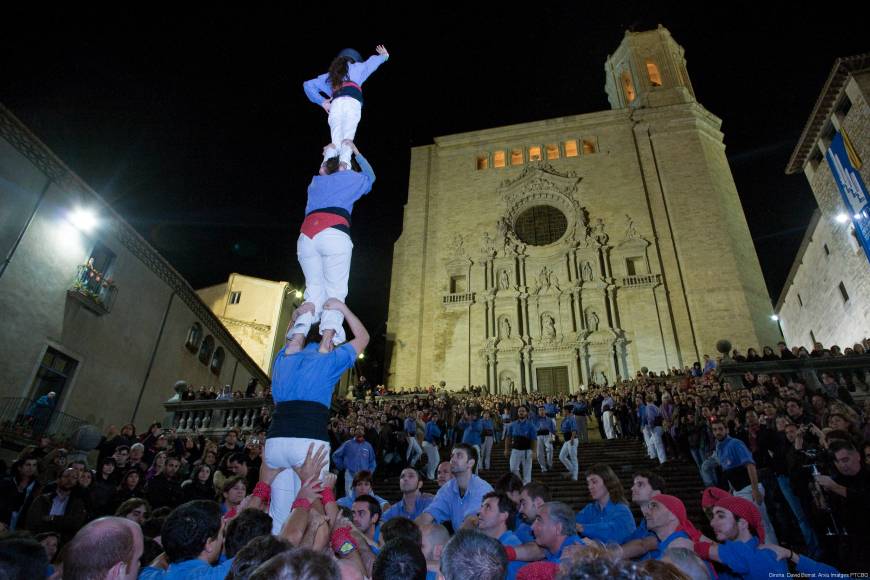
In the city of Girona, there are three dates throughout the year when casteller performances can be seen: in spring during the Temps de Flors Festival in front of the stairs of Sant Feliu and during the city's major festival, the Festes de Sant Narcís, with the casteller day on the first Sunday of the major festival, and in one of the most unique acts: the ascent of the steps of the Cathedral (this is known as the Pilar de 4).
Bellprat
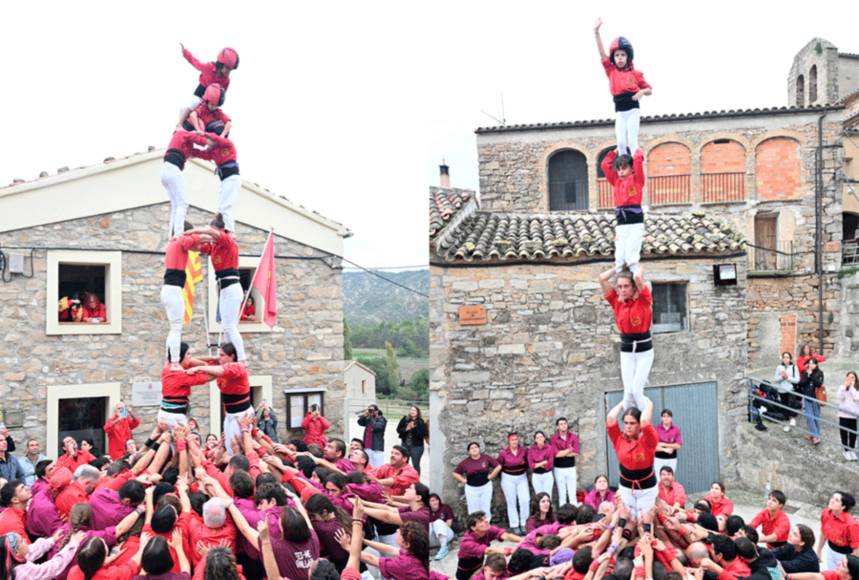
Let's finish with an interesting fact. Bellprat, a small town in Anoia with less than 100 inhabitants, had the first democratically elected female mayor during the Spanish First Republic. Since 2009, the town pays tribute to Natividad Yarza with a casteller day held at the end of October, with the singularity that it is an “olny women” castell.
Catalonia, as you can see, offers many opportunities to see castellers in action, from big events such as the Tarragona Castells Competition to small performances during local festivals. Whichever place or time you choose, make the most of your getaway to one of the best rural houses in Catalonia and enjoy an unforgettable casteller experience!
 Log in to your account
Log in to your account